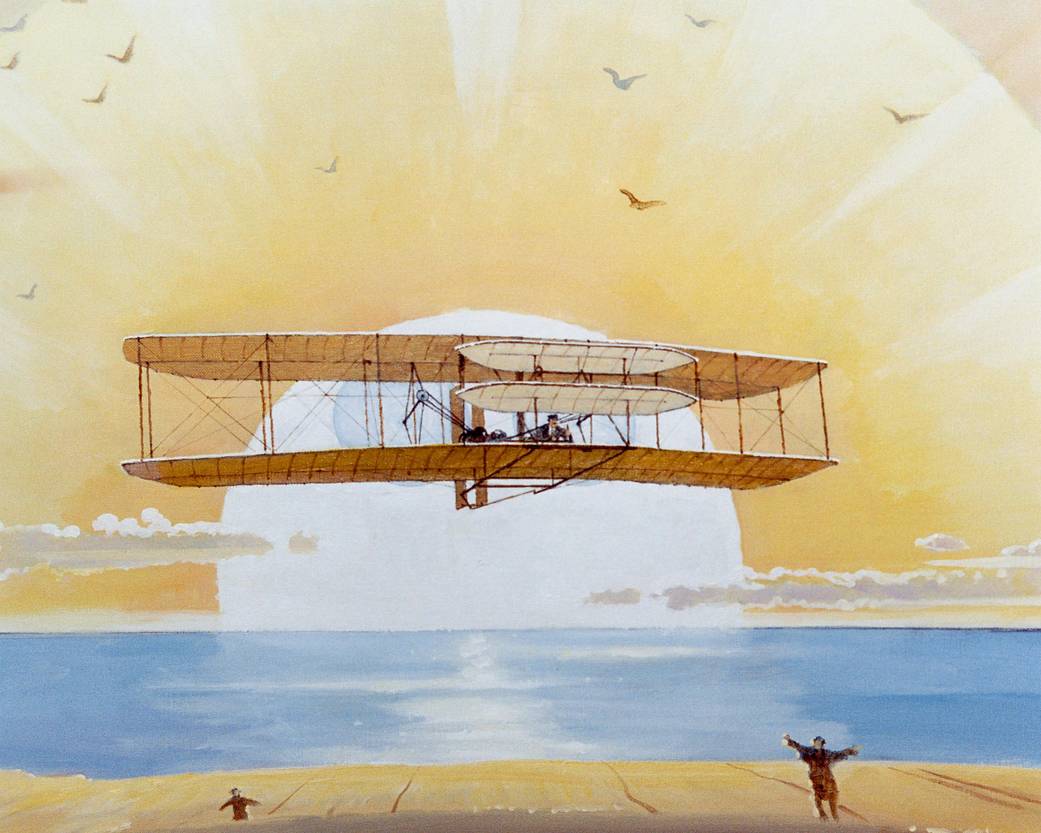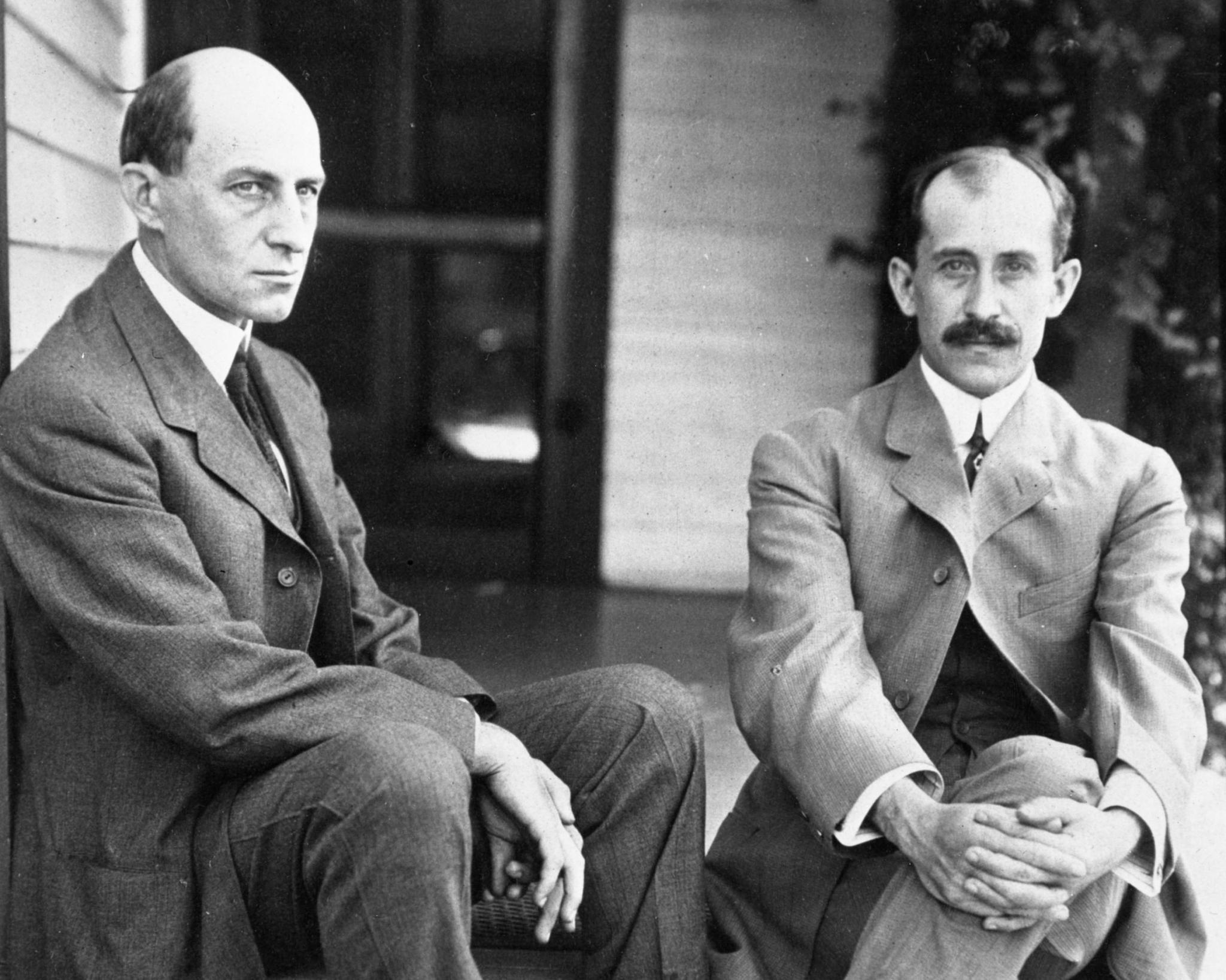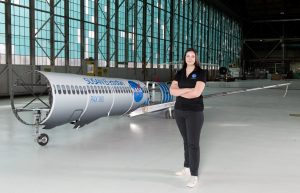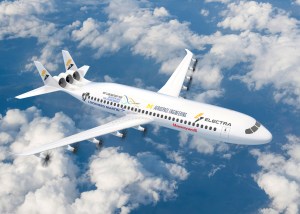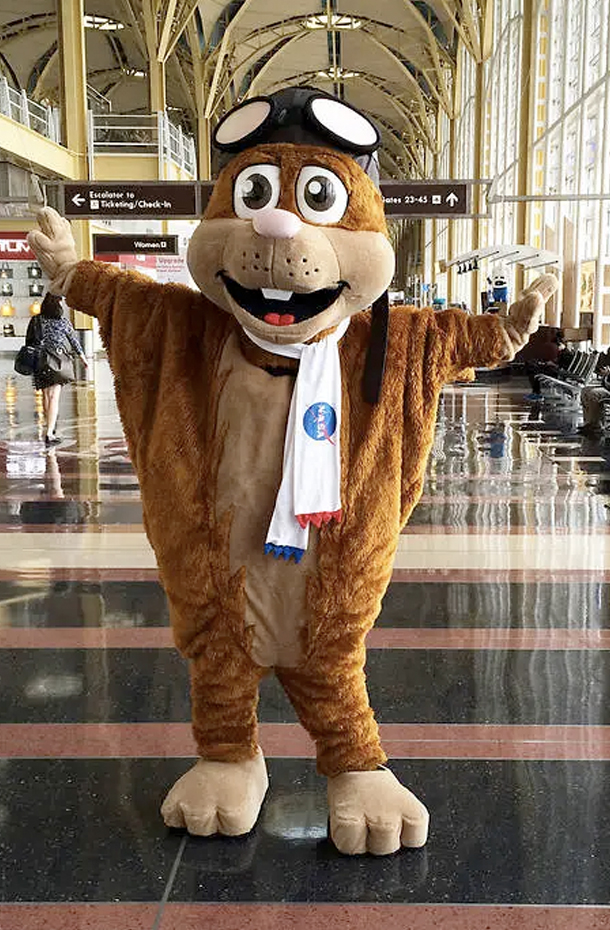Orville Wright wasn’t sure exactly how long his first flight lasted.
He and his brother, Wilbur, think it was about 12 seconds, but according to what Orville wrote in his diary of that December day in 1903 at Kill Devil Hills, N.C., the time is “not known exactly as watch was not promptly stopped.”
It’s perhaps a minor detail given the historic significance of what had just transpired on those wind-swept, sandy dunes along the Outer Banks – namely the first ever controlled flight of a heavier-than-air machine rising by its own power.
But there is much we do know about the first flight of an airplane. With Orville at the controls, the Wright Flyer took off at 10:35 a.m. EST and flew a distance of 120 feet, about 10 feet off the ground, at a top speed of about 6.8 mph.
Three more flights followed that day, with Wilbur and Orville taking turns at the controls, the last flight by Wilbur lasting 59 seconds and covering a distance of 852 feet. The fourth flight ended hard, damaging the airplane enough to halt any more attempts.
But it was Orville who made the first flight. In honor of that fact, President Franklin Roosevelt declared in 1939 that August 19, Orville’s birthday, would be National Aviation Day – an annual occasion to celebrate the importance of aviation.
Orville was still alive when FDR issued the directive, which called on all federal buildings and installations to display the U.S. flag. The proclamation also invited citizens to observe the day with activities that promote interest in aviation.
The proclamation was codified (36 U.S. Code § 118), allowing future sitting U.S. presidents to proclaim Aug. 19 as National Aviation Day.
Although not every president since FDR has issued the proclamation every year, the broad aviation community nevertheless recognizes the day as a means to honor the legacy of Orville Wright — and his brother — and celebrate the many ways aviation touches all of our lives.
Wilbur and Orville Wright
Celebrate National Aviation Day by Getting to Know our Faces of Flight
In honor of National Aviation Day, we’ve put together a collection of pictures, videos, and stories that showcase some of NASA Aeronautics’ aeronautical innovators who are working to safely transform aviation for the 21st century. See, watch, and read their stories with this up close and personal look,



























